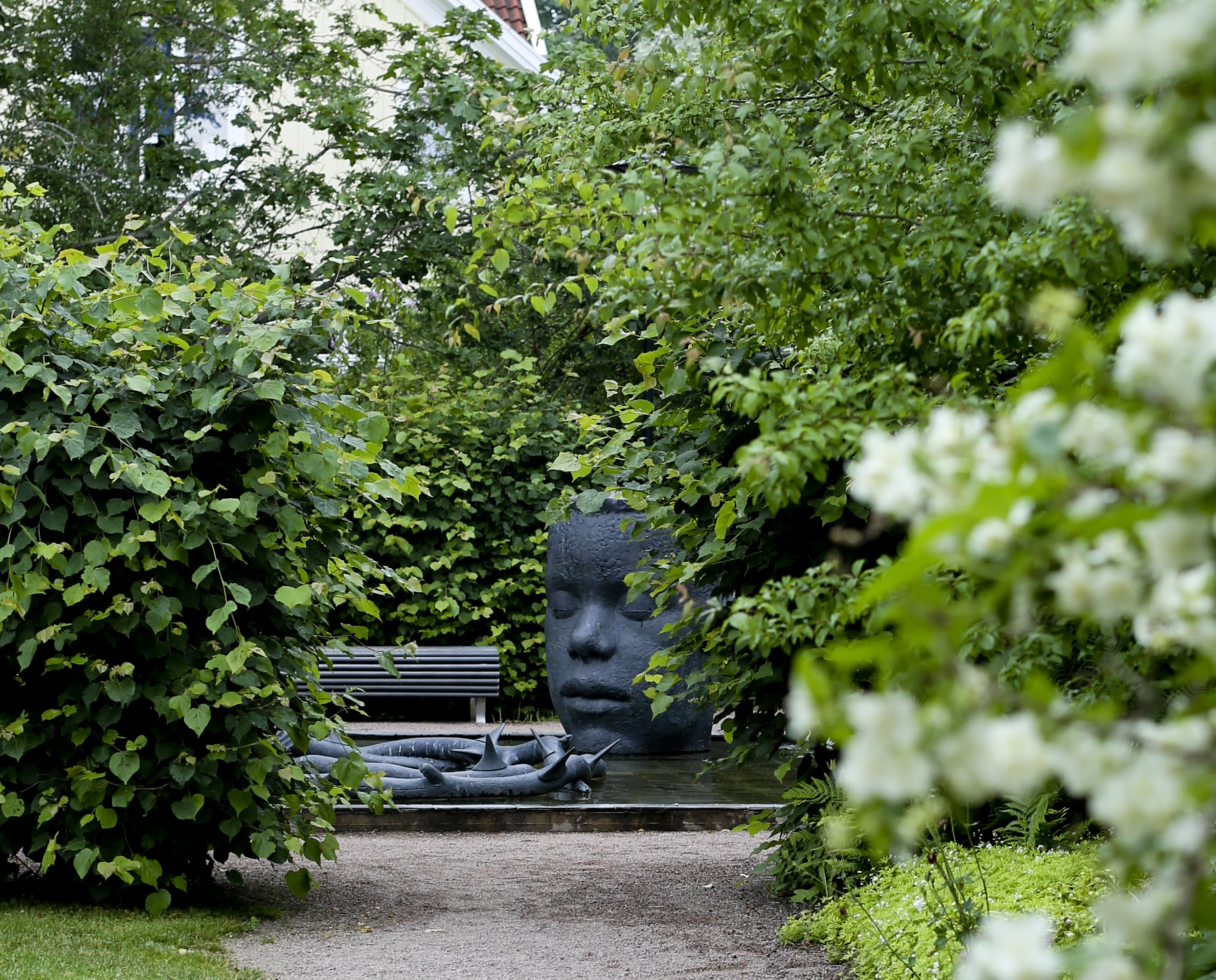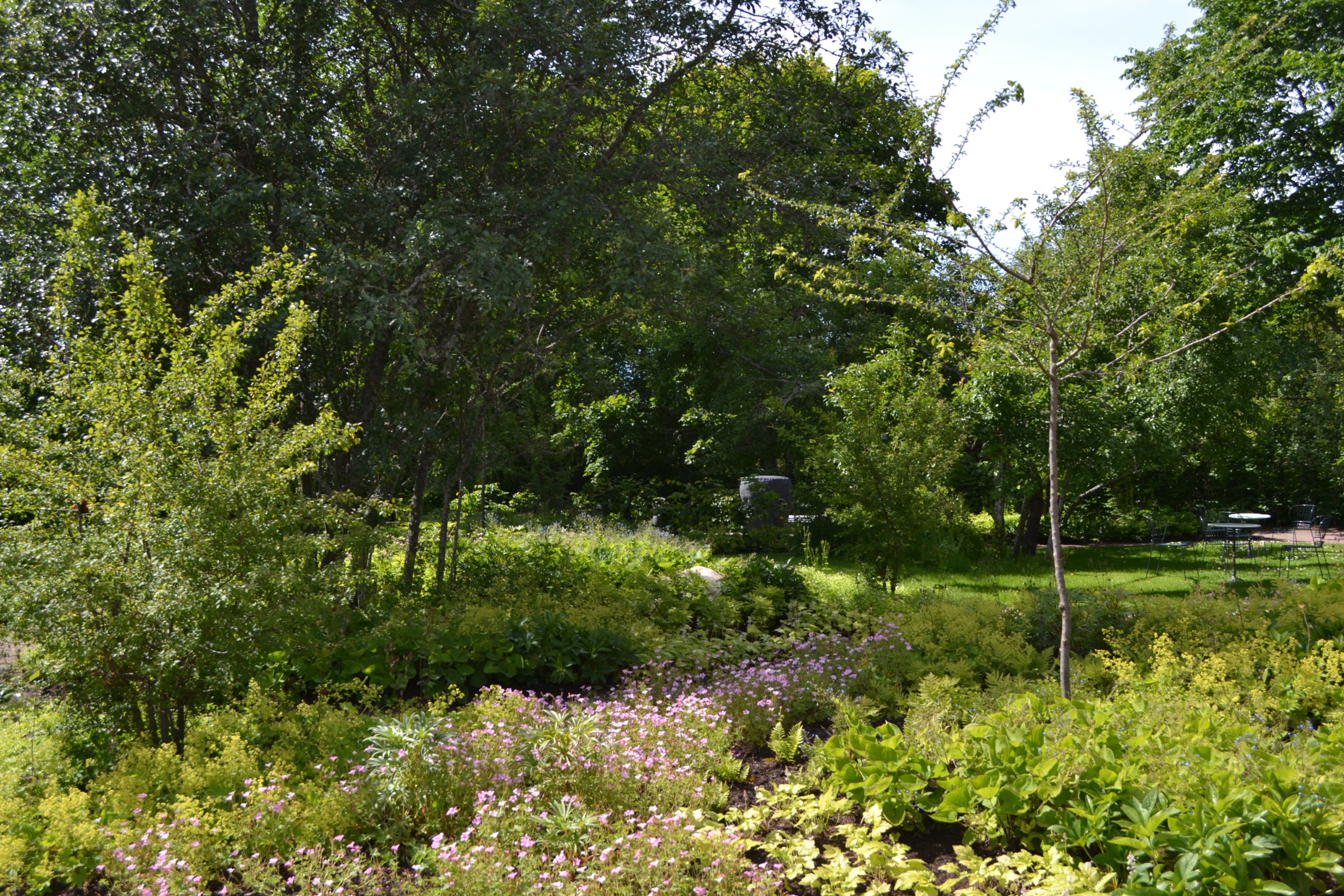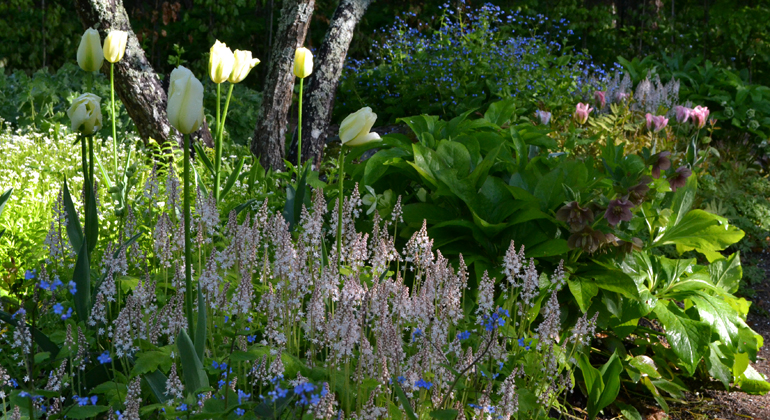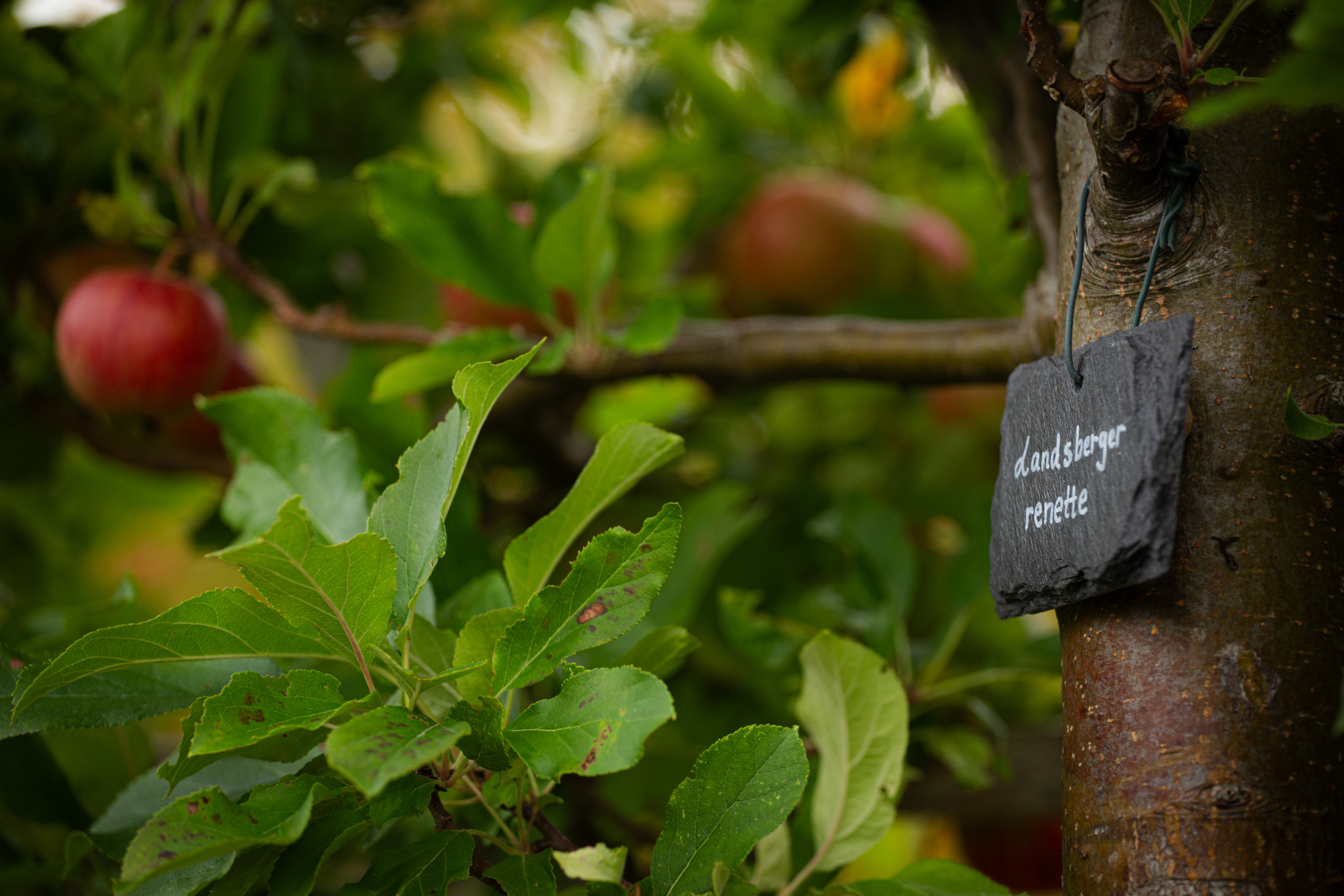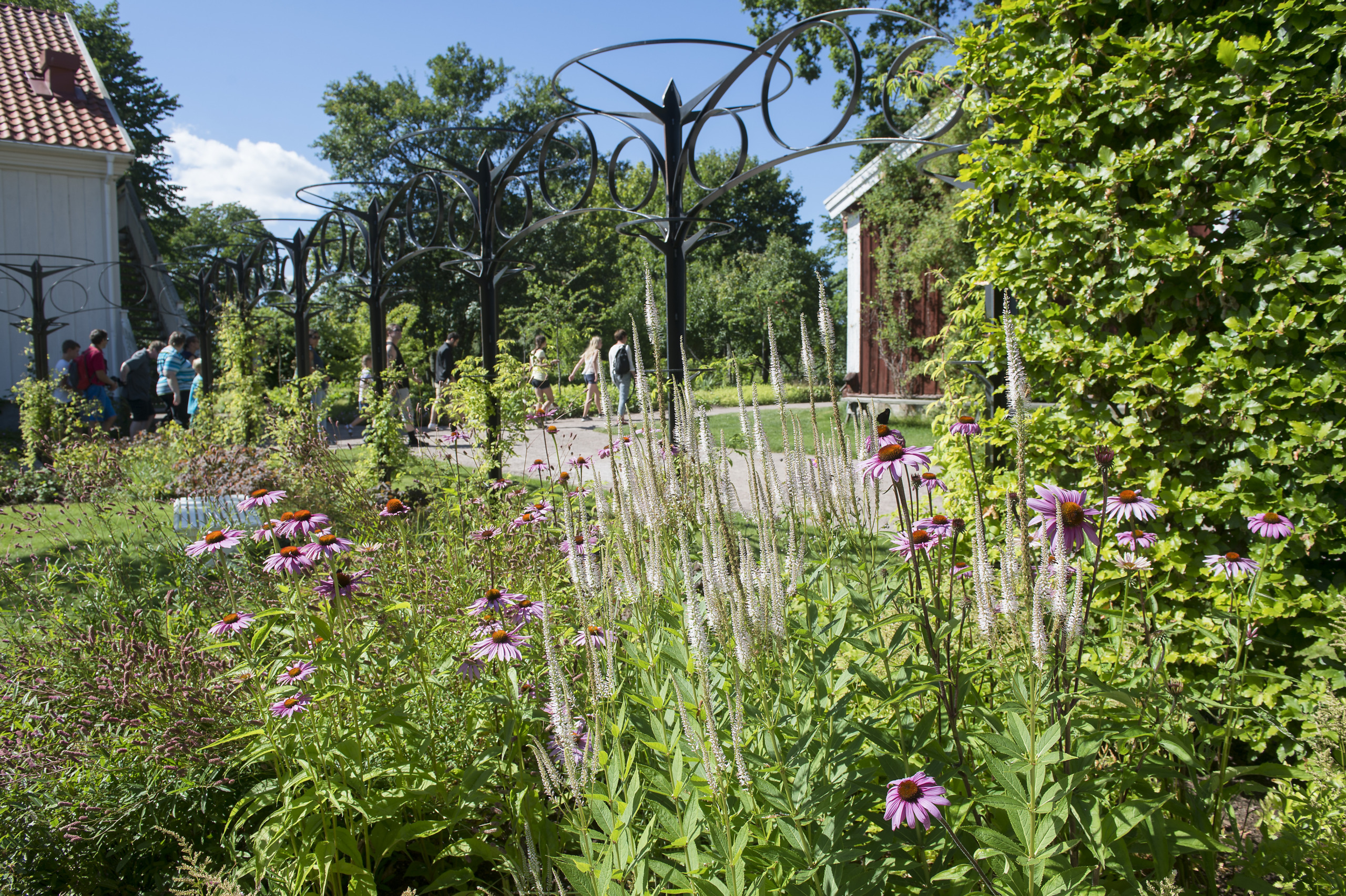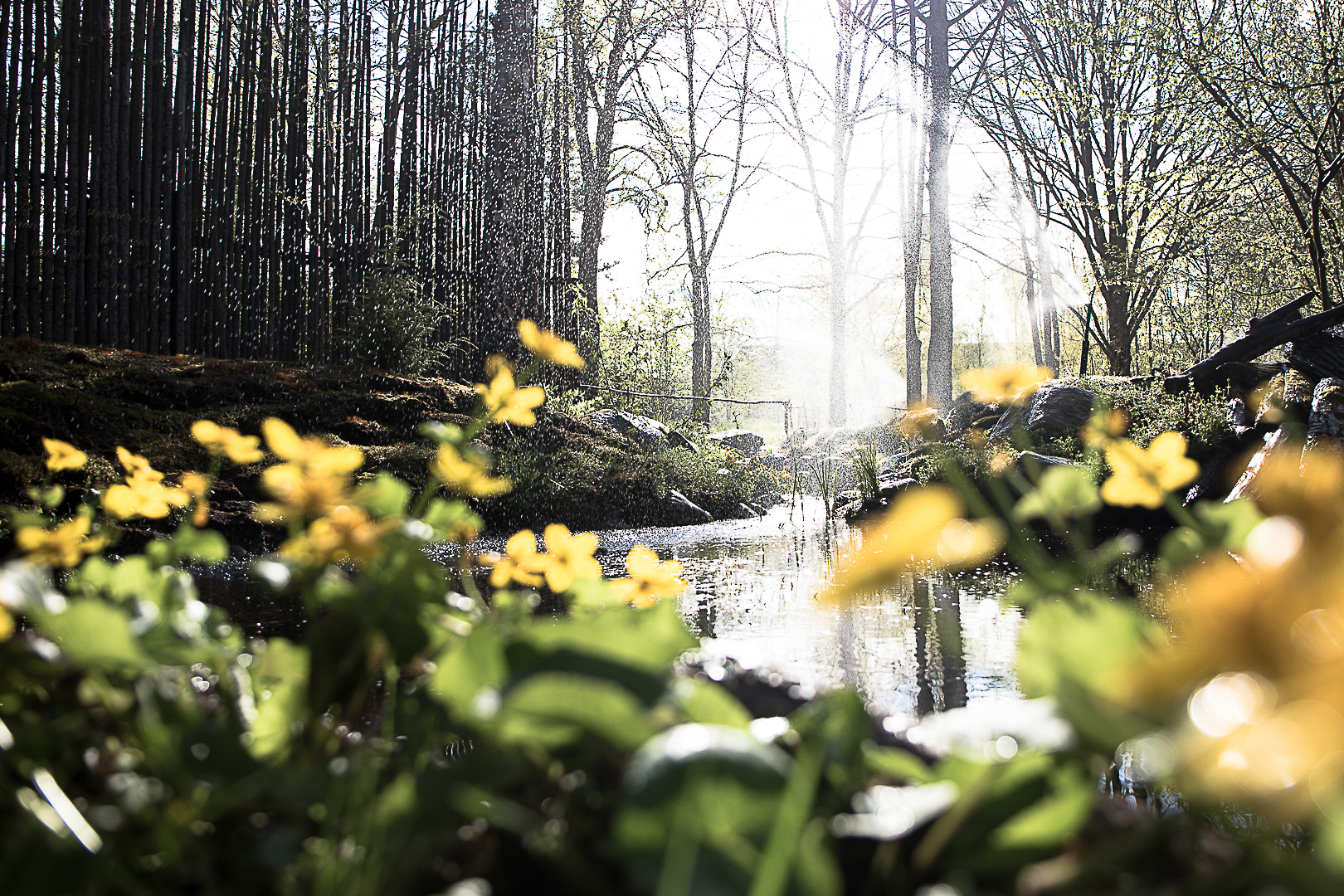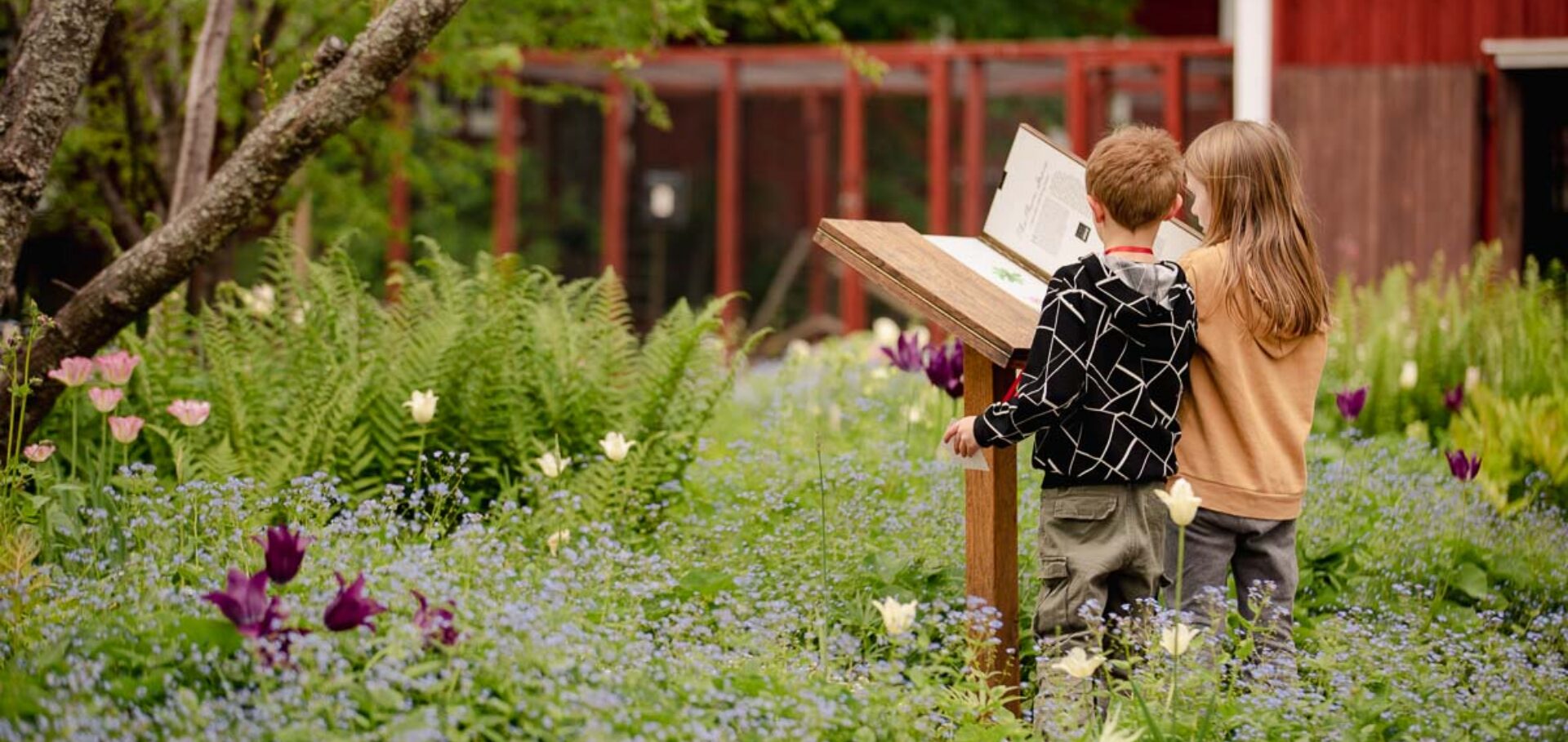
Plommonlunden
The priest’s astrachan apple tree once stood here, along with other fruit trees, and an old self-sown plum tree remains. Now it stands alongside both cherry plums and plum trees of the Opal variety. Plommonlunden is a true spring garden, with tulips, forget-me-nots and flowering fruit trees. At the edge is the chicken coop. The arrival of the hens is also a sign of spring at Näs.
Kristin’s kitchen
In a corner of Plommonlunden there was once a small cottage where the cowman Sven, his wife Kristin and their daughter Edit lived. Kristin’s kitchen has gone down in history as the place where it all began, where Astrid Lindgren as a child was sucked into the mystical world of stories and became hooked. Kristin’s kitchen no longer exists, the cottage has long since been demolished and nothing else has been built in its place. It is a simple patch of grass, but with its history it has become a beating heart in the gardens at Näs.
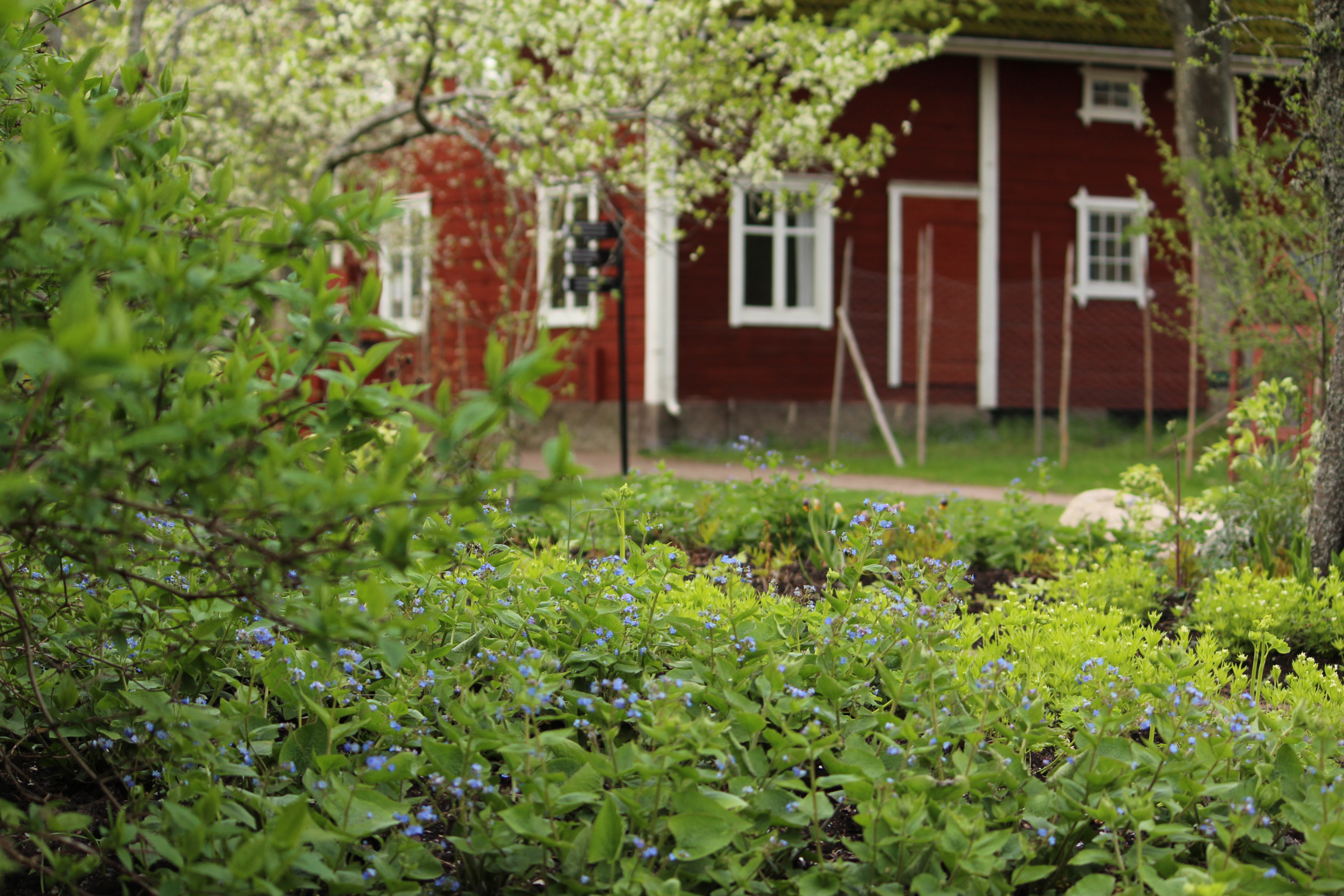
The sculpture group – Astrid’s Well
Astrid’s Well is a work of art that was installed at Astrid Lindgren’s Näs back in 2007. It was made by the artist Berit Lindesfeldt. The two components of the sculpture, a child’s head and a wild rose wreath, symbolise the two main sources of inspiration in Astrid Lindgren’s writing – the child and nature.
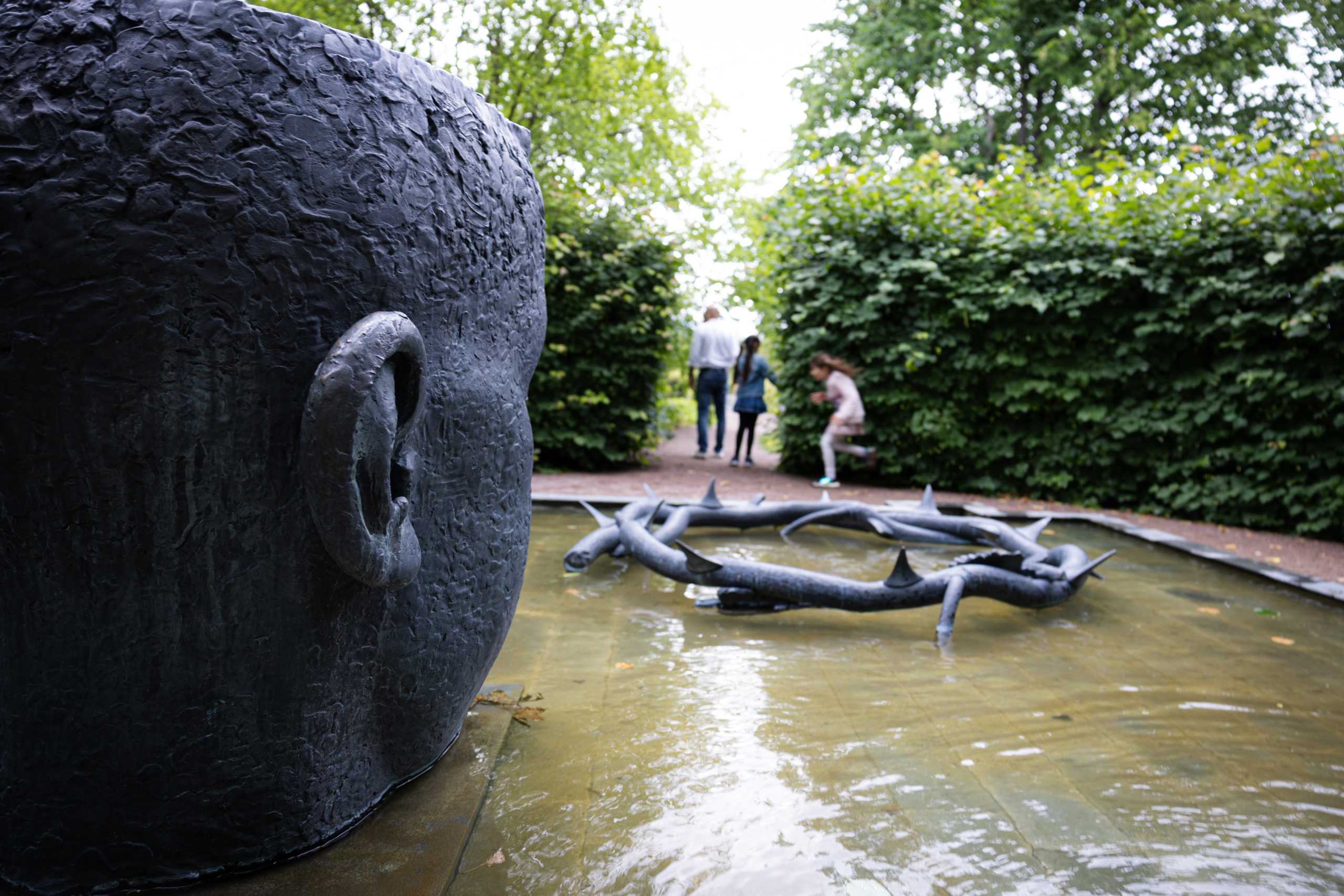
“It all started in Kristin’s kitchen, when I was about five years old. Until then, I was a small animal who, with my eyes, ears and all my senses, absorbed only what was natural. I hadn’t encountered culture until I was struck by it unexpectedly in a moment, when I stepped into Kristin’s kitchen on my little legs. Kristin was married to our cowman and, what was more, she was Edit’s mother. This Edit – blessed be she now and always – read the story of the giant Bam-Bam and the fairy Viribunda, setting my little childhood soul rocking, one that never quite comes to rest.”
From ‘Det började i Kristins kök’ in ‘Samuel August från Sevedstorp och Hanna i Hult’ by Astrid Lindgren




